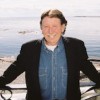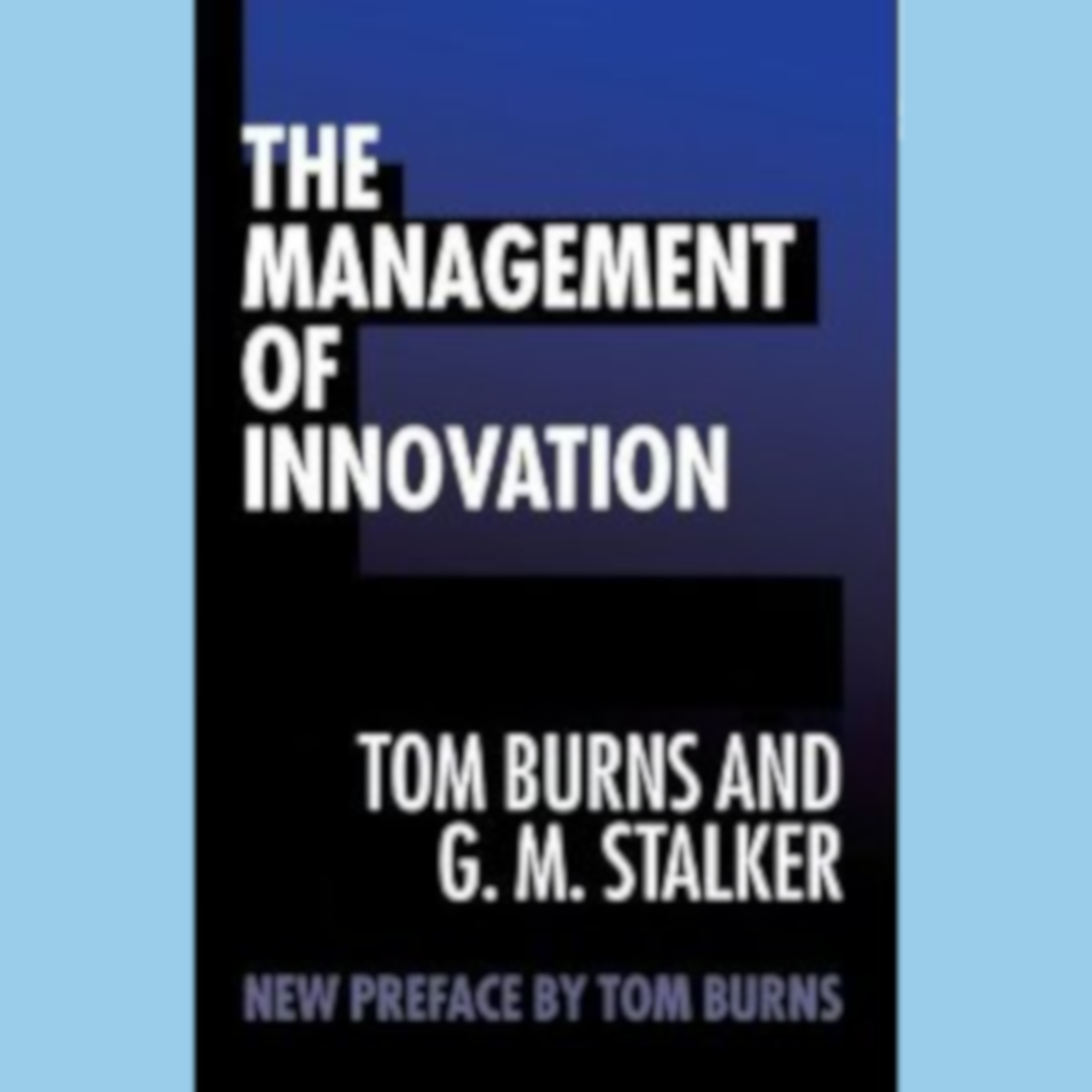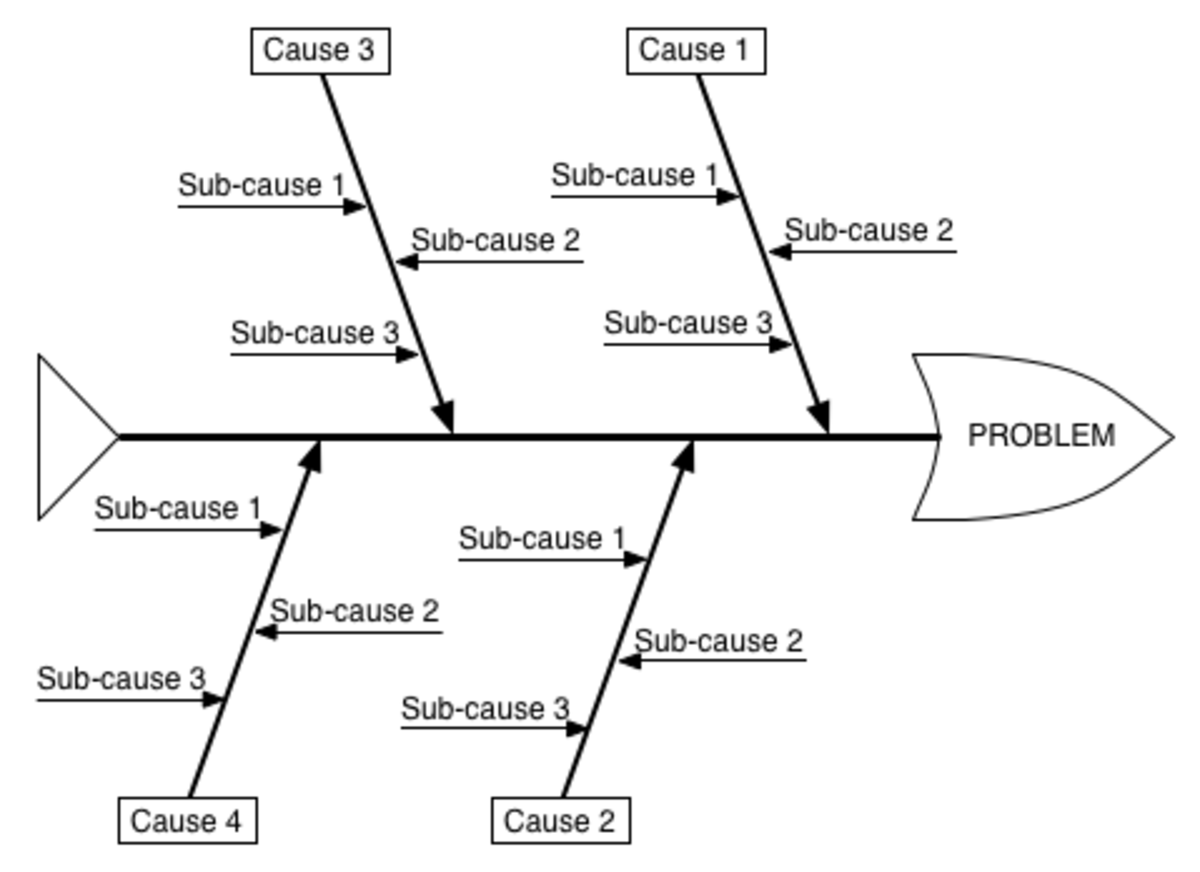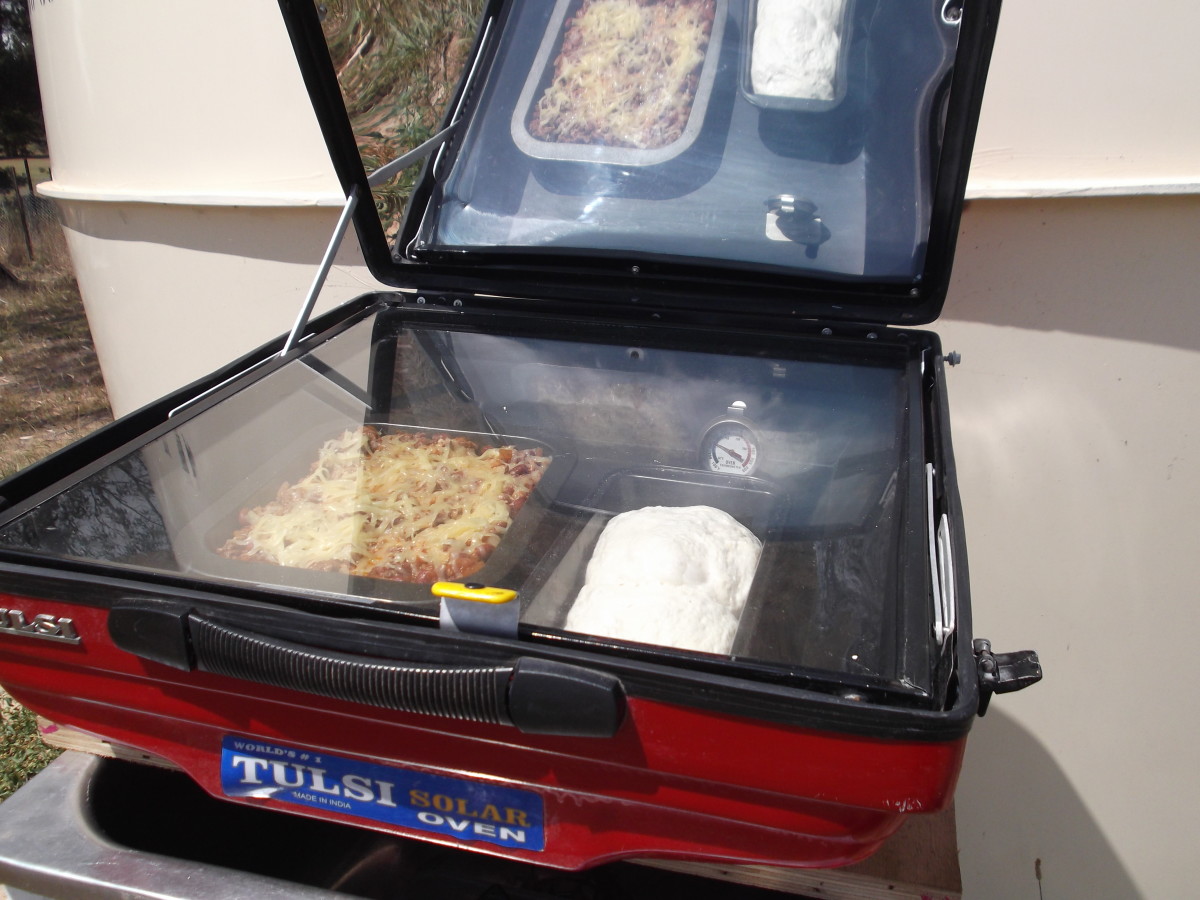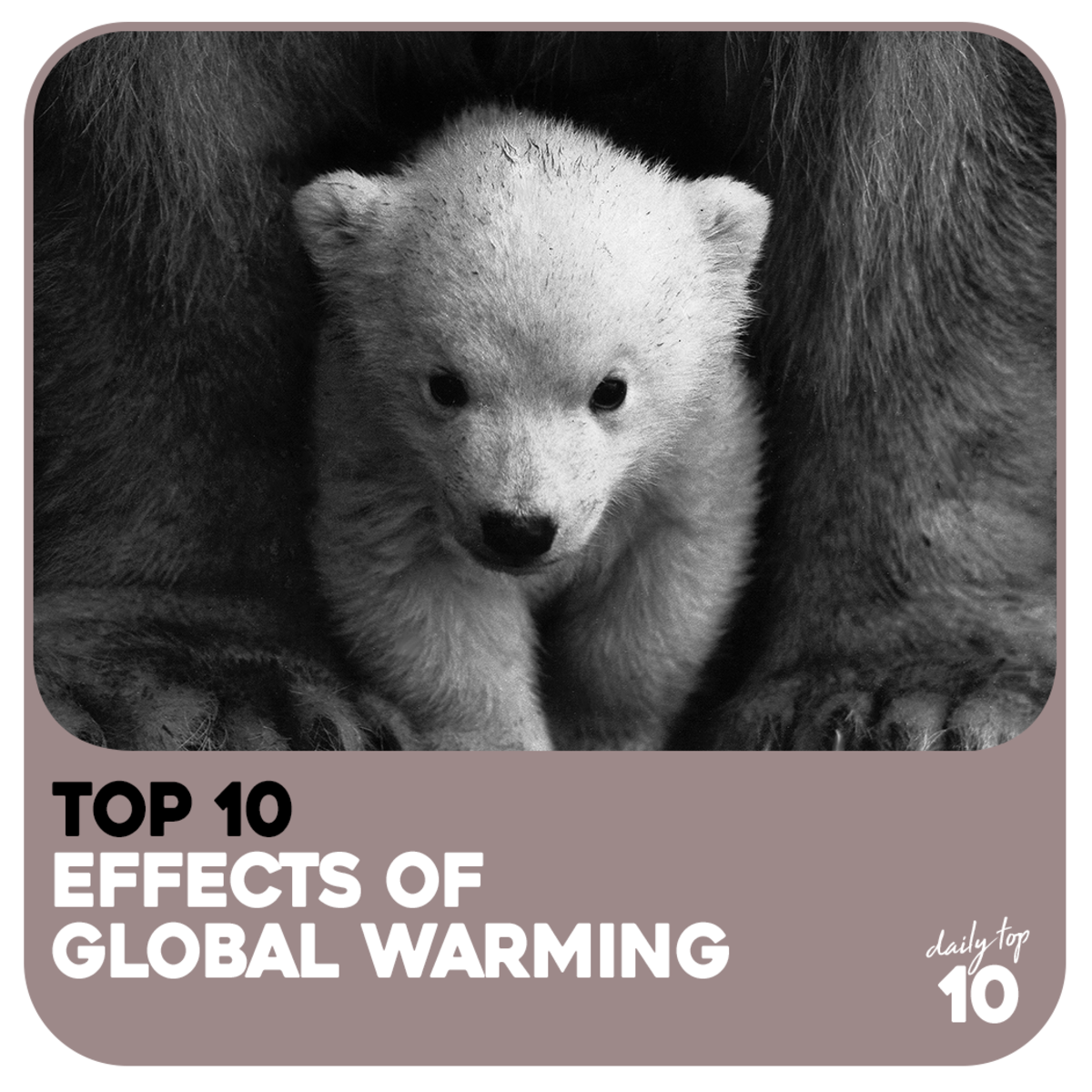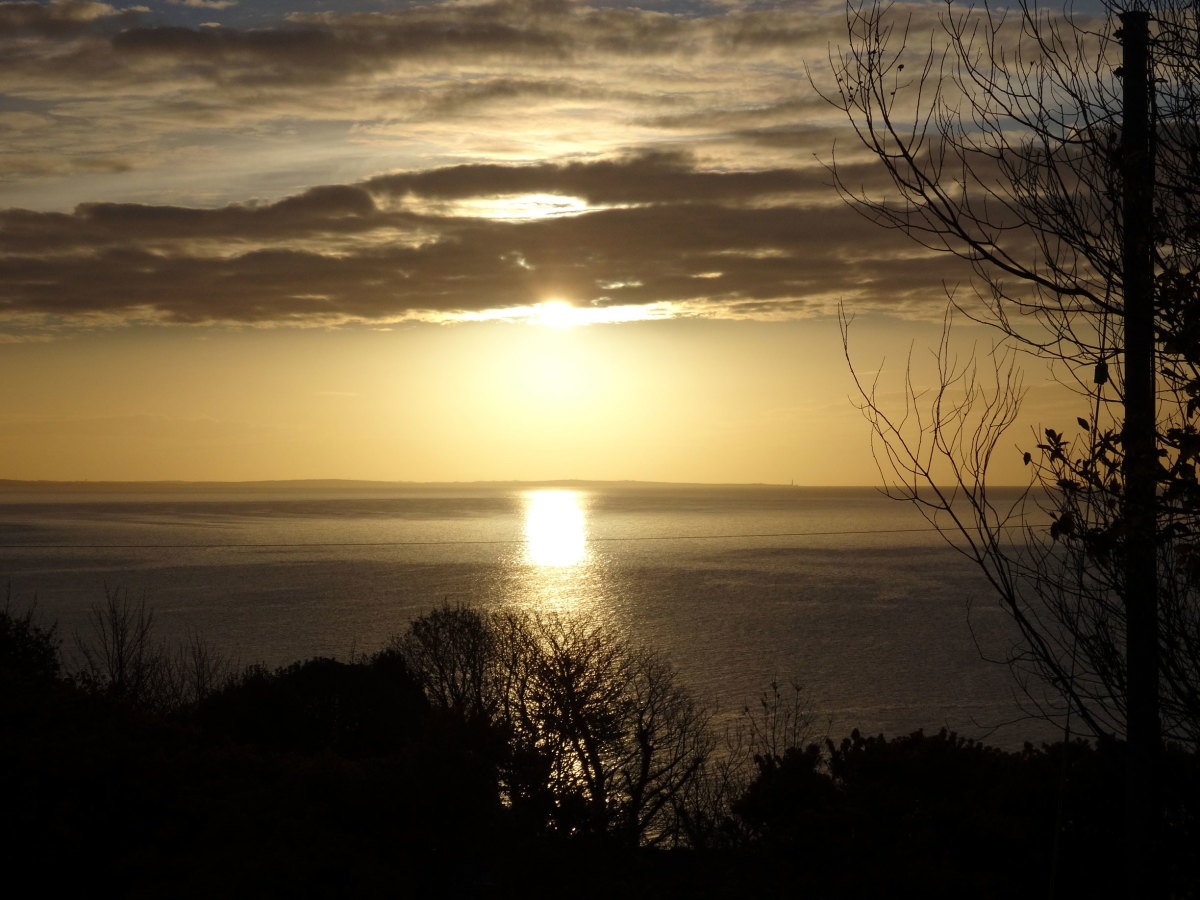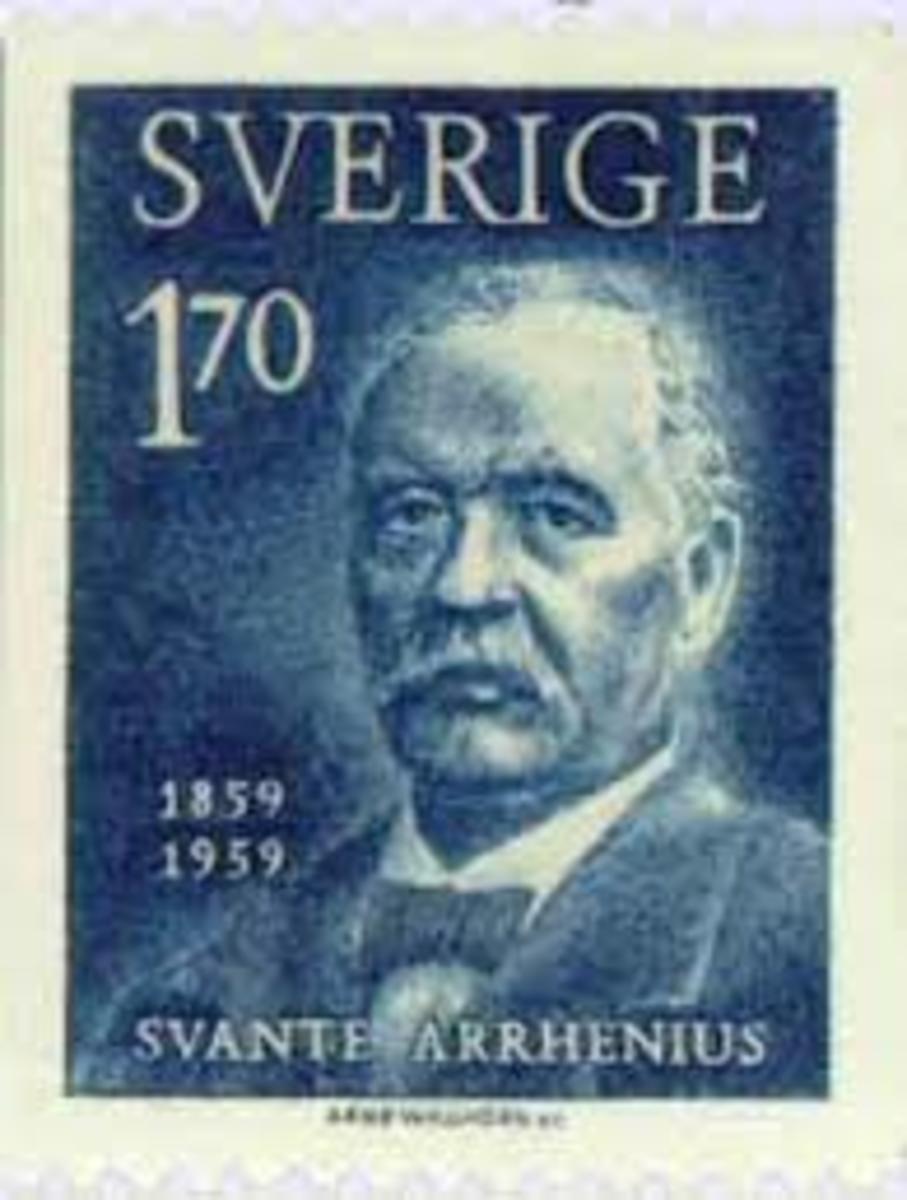Sustainable Communities: Creating Our Common Future
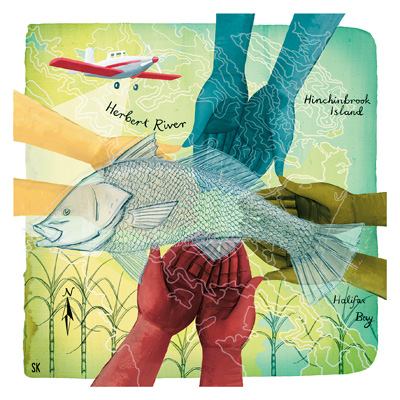
From Solving Problems to Creating Environmental and Economically Sustainable Communities
“We need not merely a vision, but a shared vision, one that guides and unites us in our day-to-day decision making. Such a vision, a common blueprint, can infuse society with a sense of purpose as we try to build a new world, one much more attractive than today’s. This sense of common purpose and excitement is essential if we are to create an environmentally sustainable economic system. — State of the World Report, 1993
“We live in a time when things are unraveling. And if you know anything about weaving, you know things which are unraveling cannot be patched. Our task in this period of unraveling is not to patch the old patterns but to build the loom on which the new patterns are woven.” — Mother Mary Claire of the Sisters of the Love of God
“When I first came to this place,” my old barber Luciano told me, “everyone trust everyone. We get together, cook, drink, talk, laugh -- always laugh! Back then, people work together. But no more. Now everyone figuring how to make money on his neighbour. Things changed. Everyone sees problems, but everyone has different idea what to do. Becomes big fight, but nothing change for better. I feel sorry for my kids”.
Communities everywhere are changing, and, as Luciano so poignantly puts it, not always for the better. Heritage buildings give way to malls and parking lots. Trees are cut down to widen streets. Familiar main street businesses shut down as mega-stores crowd the edges of town. Crime is up. Services cost more. Environmental conditions deteriorate. The dark shadows of "peak oil" and global climate change loom over us. Politicians promise more, yet deliver less. No one seems to be in control. Stress threatens to overwhelm us. Things do seem to be unraveling.
The bad news is change is inevitable. The good news is the nature of change is not.
We do not have to be helpless, cynical victimse. We do not have to be pushed around by external forces, reacting or responding to circumstances. Even if we cannot control such things as global climate change or rampant over-development, we can slow them down, change their trajectories, and mitigate their effects on us and our communities.
The time for doom and gloom is past. Now is the time for hope. For vision. And for focused action that arises out of the gap between our visions and our changing reality. In that change lies opportunity, challenge, and a chance to create what matters to us.
If we can learn, as Mother Marie Clare suggests above, to build new looms on which to weave new patterns, we can go beyond simply reacting to change. Instead of fighting what we don’t want, we will be able to consciously create the kind and quality of change we do want. We will become—individually and collectively— weavers of the fabric of our own future.
Working With Change
To work with change—to build looms on which to create and co-create results that matter deeply to us all—we need to do three key things:
1. Transcend rigid, Newtonian notions of how change works and is produced,
2. Replace problem-solving with creating as our predominant strategy for generating results,
3. Come together around visions of mutually desired results to co-create change we do want.
If we do these things well, we can take a large step towards creating the kind and quality of lives, communities, nations, and world we most want—independent of the problems, obstacles and changing circumstances we now face.
Start Anywhere, Start Everywhere, Be Gentle
I offer no formula, no one right way to create sustainable lives, communities or the sustainable ecology on which our communities' health, wealth, and well being depend. Indeed, the ecological principles of complexity and diversity suggest a sustainable future will emerge out of the intermingling of many different desires and actions.
As well, there is no right place to start. Social, economic, and environmental systems are non-linear. They curve back on themselves and learn through feedback loops. In systems terms, they are “equifinal.” That means changes in one area propagate throughout an entire system. Working toward a shared vision, different individuals and groupss can start wherever they are, take different actions, and still get to the same end.
But, such collective creativity is not likely to happen if we continue to use rigid, mechanical, Newtonian notions to force individuals and communities to change.
Newton stated, "Every body continues in its state of rest, or of uniform motion in a right line, unless it is compelled to change by the forces impressed upon it.” This holds true for non-living systems such as planets or billiard balls. However, applying this Newtonian notion to complex, adaptive systems such individuals, neighborhoods, and communities usually backfires.
Individuals who go on crash diets, quit smoking, and try to give up excessive shopping use fear, guilt, or even positive thinking and affirmations to push themselves into change. But it rarely lasts.
Groups organize protests, blockades, and other angry actions designed to “compel” change. Though such strategies do highlight concerns and, sometimes, produce temporary “solutions,” they rarely bring about the real and lasting results we long for.
At best, strategies that compel change buy time, keeping what we don’t want from happening. At worst they result in new or more intense problems. Many communities throughout North America are bitterly divided as a result of Newtonian approaches to change. Citizens battle each other in adversarial processes in which the whole community and the resource base on which it depends seem doomed to lose.
But individuals and communities are not Newtonian machines. They are dynamic, open systems. They operate under vastly different dynamics than strictly mechanical systems. Living systems do not have to be forced to change. They seek and are capable of self-organizing change.
Physicist David Peat suggests a different way of generating change—“gentle action”—is possible if we understand the dynamics underlying non-Newtonian change processes:
"Gentle action," he says, "seeks to restore harmony. Contrast it with the violent action of a stone thrown in a lake from which ripples spread out until they are lost in the tiny random wavelets at the edge.
"Suppose, however, that a harmonious coordination of tiny waves at the edge of the lake were possible. This would require a non-local yet gentle action that flows from a much greater sensitivity to the whole system. Surprising as it may seem, physics shows that if such a coordination is made of all the phases of the individual wavelets, then these ripples will begin to interfere with each other in a constructive way. They start to move inward, towards the middle of the lake and grow in size until they produce a splash right in the centre.
"In an amazing fashion, a large effect is produced out of a very gentle action involving the whole of the lake. A great flow of energy has grown organically out of a highly intelligent yet almost imperceptible form of intervention. — David Peat, “Gentle Action for a Harmonious World,” In Edges, December 1989
Gentle Action On A Global Scale
Individual action is a necessary and significant part of creating sustainability. But action at other levels is also needed. To be optimally effective, individual action needs to be connected and “coordinated” with the actions of others on all levels of our local and global systems.
In her book, Paradigms in Progress, futurist Hazel Henderson outlines five levels at which policy intervention and action is needed to “green the global economy” and bring about a transformation to a sustainable society.
Individuals need to change their buying, investment, voting and waste disposal habits. Local governments need to enact legislation to “re-knit communities” and “encourage energy conservation.” The corporate sector needs to “prevent pollution at its source,” and “reposition…redesigned product lines to take advantage of ‘green markets’. National governments need to “adopt new scorecards of progress,” and “green their tax codes to tax environmental sins and waste.” At the international level Henderson advocates “leveling the global economic playing field by raising its ‘ethical floor.’
She, like David Peat, is confident coordinated, interconnected action by individuals and groups at all levels can bring about remarkable changes.
In their book, Beyond the Limits, Donnella Meadows, with Dennis Meadows and Jorgen Randers, described an example of such coordinated change that, they suggest, “shows the people and nations of the world at their collective best….”
“The human race,” they point out, “overshot, learned about, and backed off from one clear environmental limit—the destruction of the stratospheric ozone layer.”
One of their concluding statements in Beyond the Limits points up the diversity, coordination, and creativity that came together to create a major international agreement to protect the ozone layer in the stratosphere:
"All the major actors in the ozone agreement were necessary and will be necessary again: an international negotiator like UNEP [United Nations Environment Program]; some national governments willing to take the political lead; flexible and responsible corporations; scientists who can and will communicate with policy makers; environmental activists to put on pressure; alert consumers willing to shift product choices on the basis of environmental information; and technical experts to come up with adaptation that can make life possible, convenient and profitable even when it is lived within limits." — Donnella Meadows, et al, in Beyond the Limits
Coordinated information-gathering and sharing—structural dynamics that look more like the web of an ecosystem than a Newtonian machine—went into creating the ozone agreement. This tangible example of transcending habitual Newtonian notions is an example of David Peat’s' gentle action creating a powerful and lasting effect.
Similar whole-system change-creating efforts take place locally, as individuals and communities shift from crisis-driven problem-solving to learning and working together to apply the dynamics of creating to producing results they want.
Gentle Action On A Regional Scale
In the northwest corner of British Columbia, where that province borders on both Alaska and the Yukon, the Tatshenshini Wilderness lies at the core of one of the greatest aggregations of natural parks on the globe.
The United States first preserved Glacier Bay in Alaska as a national monument, then in 1980 as a national park. They also set aside Alaska’s Wrangell St. Elias National Park. On the other side of the border Canada brought Kluane National Park into existence. But, flowing through the heart of this great collection of wild parks, the Tatshenshini River, one of the wildest and purest rivers in the world, was still unprotected.
In the late 1980’s, Geddes Resources, a Canadian mining company discovered large copper deposits on Windy Craggy Mountain smack in the centre of this spectacular wilderness. Geddes proposed to build a huge open pit mine only 15 miles upstream from Glacier Bay.
Veteran Canadian wilderness campaigner Ric Careless, then Director of the Wilderness Tourism Council of BC, joined with local guide outfitters and conservation groups to form Tatshenshini Wild. Together, they set out to win the hearts and minds of Canadians in favour of protection for the “world’s wildest river.” The project quickly grew to international proportions.
“Windy Craggy’s potential to cause massive environmental damage to a transboundary salmon river clearly put major U.S. interests and territory at risk,” said Careless. “Tatshenshini would become the first continent-wide wilderness campaign.”
Over the next few years, conservation groups from all over North America collaborated in creating a protected Tatshenshini River. In a strategy meeting in Vancouver in November 1991, Tatshenshini International (TI) was formed, linking fifty different conservation groups and representing a combined membership of over 10 million North Americans.
Organizers conceived of a new kind of organizational form, neither coalition nor supergroup. “Indeed,” said Careless, “we designed Tatshenshini International to operate as an ecosystem. This setup meant that each organization would proceed in its own style and in pursuit of its particular mandate to achieve Tatshenshini’s protection. Like organisms in an ecological community, individual groups would operate collaboratively in their particular niches. Together these actions would contribute to the overall campaign.”
The original group, Tatshenshini Wild, became the information coordinating body, linking group to group and person to person. “Our role,” said Careless, “was to keep the lines of communication open and the information flowing. Just as a healthy organism can only function if all its neural links are functioning well, our responsibility was to make sure the actions of each part of Tatshenshini International were know by everyone.
"In this manner the organism, the campaign ecosystem, would come to function by itself, with no one group controlling or being more important than another. … Later in the campaign, when events moved to a fever pitch, it was this ecosystem structure that ensured success. Eventually so much was happening around North America that saving Tatshenshini meant that no one was, or could, direct the show. The organism came to life and functioned on its own accord with its own collaborative mind. The thrill of being part of this process was extraordinary.”
It worked. On June 22, 1993, BC’s premier, Mike Harcourt, announced that a million hectares would be set aside as a park. The mine would not be built.
A year and a half later Tatshenshini received designation as a United Nations World Heritage Site. “Finally,” said Careless, “the world’s largest international park was complete, with Tatshenshini at its core.”
Gentle Action At The Local Level
Peat's approach to gentle action provides a novel and potentially powerful approach to co-creating change in local communities. In their book, The Ecology of Hope, Ted Bernard and Jour Young describe nine communities in which diverse stakeholders came together to transcend the “economy vs. environment” dichotomy. They show how groups of people with seemingly conflicting interests, opposing ideas and adversarial histories came together, found common ground on which they agreed, then co-created mutually desired results. They also show how working from common ground can build the deeper trust needed to tackle more controversial issues.
For example, on the eastern shore of Virginia, farmers, fishers, business people, developers, tourism operators, government agencies, the Nature Conservancy, local ecologists, environmental activists, and just plain citizens came together. They took part in planning initiatives that culminated in a sustainable development action strategy “capitalizing on and protecting (the area’s) world-class natural, cultural, historic, and human assets for the ongoing benefit of all citizens.”
Tim Hays, the area’s local Director of Sustainable Development, described a collective crafting of a vision based on shared values when he said, “Despite the local tendency to polarization and fragmentation, we have overcome the jobs versus environment conflict. The easiest thing to understand here is the importance of natural connections. While protecting our land, our waters, our history and our culture, everyone maintains their identities yet can be still working toward goals of sustainability—even protecting biodiversity.”
In another example, Bernard and Young describe how residents of Plumas County, an isolated logging community in north-eastern California, “collectively arrived at a new vision of the future for their community. Wilderness advocates, timber mill operators, loggers, forest service personnel, cattle farmers and ranchers, environmentalists, soil conservationists, members of the chamber of commerce, school teachers, wives of loggers, elected officials—all found common language and common goals and expressed their new vision in a manifesto called the Quincy Library Group Community Sustainability Proposal.” (The group grew out of informal meetings that took place in the neutral space of the community’s Quincy Library.)
The group's Sustainability Proposal, Bernard and Young assert, “was not a watered-down compromise hammered out in an adversarial process, where everyone including the resource, leaves a loser. … (It) was an innovative concept based on a vision of ecological and economic health.”
This disparate group of citizens agreed the environment was the source of their resources, and both wealth and health. They resolved to put environmental sustainability first, and then organize their economic development programs so jobs, new business opportunities, and profits were generated in ways that protected and sustained the integrity of the local environmental systems on which they all depended.
The Quincy Library Group did such a good job aligning stakeholders around the Community Sustainability Proposal that, in 1996, they were awarded $4.7 million by the US Department of Agriculture for forest management activities in a local watershed. In July 1997, the US House of Representatives approved—by a vote of 429 to 1—an initiative that directs the US Forest Service to implement much of the proposal.
In both examples, communities realized the long-term survival and sustainability of their livelihoods depended on the sustainability of their environment. They realized their own and their children's health depended on the health and integrity of the natural systems that provided the resources needed to live and work.
In both cases, rather than focusing on problems or solutions—which participants felt tended to fan the flames of conflict—the communities crafted a clear, compelling, vision of ecological and economic health, then took action to begin making that vision a reality.
By acting in this new, often challenging way, they transcended the limits of the old problem-solving approach that previously kept them divided and ineffective. They shifted into the more powerful, productive, and sustainable processes of creating and co-creating mutually desired results.
Solving Problems or Creating Results?
Creating is a fundamentally different process than problem-solving.
Problem-solving focuses on what we don’t like and don’t want and takes action to get rid of it, or relief from its intensity. Creating focuses on what we truly do want—on what we’d love to see exist in our lives, communities, and world—then takes action to bring it into being.
While problem-solving occasionally produces results, they, as we shall see shortly, are rarely the results we truly want. Nor are they usually sustainable over time. Creating is much more likely to produce the real and lasting results we long for.
To create the future we most want—to weave new patterns, independent of problems, circumstances, and external forces—we, as individuals and communities, must learn to do four things in a sensitive, interconnected way:
1. Clearly specify and agree upon the future we most want, where we want to end up
2. Clearly assess and agree upon, where we’re starting from, where we are now.
3. Gently hold the creative tension that arises out of the gap between vision and reality, and learn to live easily in that gap, and use the tension to energize action.
4. Invent, test and evolve a variety of ways for getting us all from our different starting points to commonly agreed upon destinations and results.
However, because change is so often seen as a problem to which we must react or respond, consciously creating and co-creating the change we most want is not yet a commonly used approach.
Before we can understand and embrace a gentler, vision-driven approach to creating change, it helps to fully understand and appreciate the limits of the more common problem-solving approach.
Problem Solving: A Shaky Foundation On Which to Build A Common Future
Problem-solving works well for getting rid of things we don’t like and don’t want—i.e., problems. But it does not work well for bringing into being what we do want—lasting, sustainable results!
Why? Because problem-solving rests on a foundation—a structure—in which energy and action tend to oscillate back and forth between better and worse.
Structure refers to the way the pieces and parts of a system are put together. A pile of bicycle parts, for example, is just a heap until they are arranged in a particular way. The arrangement of parts—the framework—makes a bicycle useful. The framework organizes system elements so the whole is greater than the sum of its parts.
“Structures generate patterns of behavior,” says Peter Senge, MIT systems guru and best-selling author of The Fifth Discipline. Like a stream bed gives rise to the surface behavior of water in a stream, the structure underlying any system gives rise to its patterns of behavior.
Individuals and communities set up (usually unconsciously) structures that guide their behavior. How we arrange our values, desires, ideas, fears, aspirations and perceptions of reality in relation to each other gives rise to our patterns of behavior.
To make lasting changes in behavior, we must change the arrangement of key elements in the underlying structure. To create the kind and quality of change we truly want in our communities, we must ensure the structures underlying our actions support the final results we desire.
But not all structures are appropriate for creating real and lasting results.
A table is a static structure, designed to stay put. Rocking chairs and pendulums oscillate back and forth. Static or oscillating structures rarely produce lasting change. Bicycles and sailboats are resolving structures. They can go somewhere and stay there. Resolving structures produce real and lasting change.
There is, for example, a fundamental difference between the structure, “jobs or the environment,” and the structure, “jobs and the environment.” There is a subtler, but just as fundamental, difference between the both/and structure, which can imply a shaky, tenuous balance, and a structure organized around a logical hierarchy such as, “jobs that enhance the environment on which we and our jobs depend.”
Whenever we want two things, but are not clear which is most important, we are likely to oscillate back and forth, first toward one desire, then toward the other. This sort of structure rarely leads to real or lasting results.
To create a structure that consistently moves toward results we most want, we have to prioritize our desires in a logical hierarchy, as in the last example above. Both jobs and the environment are important, but, because jobs and human life depend on the resources we extract from the environment, it makes logical sense to make the health of the environment our primary choice. Then, we can organize job-development strategies so they give us what we want and enhance the environment on which we, and our jobs, depend. In such a structure we are far more likely to create all of what we want—and to sustain it over time!
Before we look more closely at the powerful and more effective structure of creating, we need to look a little deeper into the limits of problem-solving.
The Limits of Problem-solving
Unfortunately problem-solving, the most widely-used approach to generate results in our culture, has a structure that oscillates. So, often, the results it produces do not last. Three major limitations inherent in problem-solving prevent it from being a primary method of generating desired results:
1. Not all difficult situations are problems, nor are they “solvable.”
In his book, A Guide for the Perplexed, E.F. Schumacher pointed out there are two fundamentally different kinds of situations we call “problems.”
The first, convergent problems, narrow down to single solutions. The more intelligently you study them, the more the answers converge. These problems are solvable. Ask thirty experts what the solution is to a broken leg or a busted water main and they will all give you basically the same answer.
However, ask thirty experts, “What is the best way to raise children, run a country, or develop a healthy, livable community?” and you’ll get thirty different answers.
Questions such as this are divergent. Such open-ended challenges have no “correct” solution. The more you try to “solve” them, the more experts and “solutions” diverge from each other. Eventually you end up with pairs of conflicting opposites such as “Freedom vs. Discipline,” “Competition vs. Cooperation,” “Growth vs. Stability,” or “Economy vs. Ecology.”
Our logical mind wants to remove the tension between such opposites by coming down on one side or the other. But, if we come down on one side, the other cries out for resolution. The tension is shifted, not resolved. Action in this structure oscillates between the divergent poles. It can also result in conflict between parties at opposite poles of the divergent structure.
Though such divergent challenges cannot be solved, they can, as we shall see, be transcended by strategies that encompass and integrate both poles of the pair of opposites.
2. Problem-solving is driven by intensity. It seeks relief, not results.
Most efforts to solve problems are actually attempts to relieve intensity. We use them to get rid of the pain and conflict associated with the problem. The focus of action is relief, not results.
Taking aspirin to relieve a stress headache doesn’t eliminate the stress that causes the pain. Nor does it result in a more effective, stress-free way of organizing one’s work load or life style. Indeed, by relieving pain, problem solving lets us keep doing what caused the pain in the first place. But, when the aspirin wears off, we’re back where we started and maybe a little closer to ulcers.
We take action to reduce intensity. Less intensity leads to less action. Attention is then shifted to more intense, concerns. The problem—and its deeper causes—remains. When intensity re-builds, the pattern repeats, as Robert Fritz graphically describes in The Path of Least Resistance:
A PROBLEM
leads to
ACTION
leads to
LESS INTENSITY
leads to
LESS ACTION
leads to
THE PROBLEM REMAINING
Action is taken, energy and money are spent, but lasting results are not generated. A number of years ago, for example, an environmental coalition mobilized to stop pulp mill pollution in Georgia Strait, near Vancouver, BC. Protests were held, pictures of dead sea life were prominent, and angry voices were raised in speech and song. The strategy seemed to work. Government passed tough anti-pollution laws and gave the mills a strict deadline to meet. The protesters celebrated their victory, then went back to their regular lives, or turned their attention to the next issue.
But, with the pressure off and public attention diverted, pulp mill operators quietly carried on as always. Later, a brief article in a local paper reported that the Ministry of Environment was not, yet, enforcing the new laws, and had extended the deadline for compliance. Still later, the government rescinded the regulations.
The coalition, once again, had to up the intensity of the issue to mobilize people to action. This time, though, many supporters shrugged, said, “What's the use?” and refrained from joining the fray. Like “compassion fatigue” in international aid, there may well be a kind of “protest fatigue” caused by over-relying on conflict as a spur to action.
Taking a stand against what we don't want is sometimes necessary to buy time or to prevent the destruction of some irreplaceable natural area. But, it rarely leads to the real and lasting results we do want. Instead, because a standing against strategy is usually driven by a desire to relieve intensity, it, too, leads to oscillating patterns of action and inaction—and, eventually, to frustration, hopelessness and despair.
The sooner we realize making bad things better is fundamentally different than creating what we most want, the sooner we’ll get beyond the limits of problem-solving.
3. Problem-solving often intensifies the problem it was meant to solve.
ABS brakes, seat belts and other auto safety features should make us safer, right? Maybe not! Recent studies show such safety devices make drivers “feel” safer, so they take more risks. The net effect of solving the safety problem is more accidents, and worse injuries.
Likewise, studies by the British government reveal the primary cause of traffic congestion is new motorways. Many cities and towns have tried to solve their parking problems by building more parking logs. But "solving” traffic problems by building more motorways and parking lots relieves congestion. It makes it easier to drive, which leads to more cars, more congestion, over-crowed parking lots, and more complex problems!
Systems experts call such bizarre results “counter-intuitive effects of naive interventions.” They result from applying narrow problem-solving techniques to complex, divergent challenges. The automotive realm is full of such counter-intuitive effects. As difficult as it might be to believe, Daimler and Benz introduced the automobile to Victorian Europe as “the solution to pollution.”
At the end of the 19th century, the auto's designers promised the horseless carriage would rid Berlin, Paris, and London of the fine, foul dust caused by pulverized droppings from the millions of horses that lived and worked in those cities. Today, horseless carriages clog our streets and freeways, and foul the air around the world. Rather than a panacea for pollution, the car has become a leading cause of the health-destroying toxic smog that causes so many of us to flee the cities for the suburbs.
But, in their search for relief from smog, few suburbanites realize their “solution” requires them to increase their dependence on cars and SUVs. It compounds the problem they wanted to avoid. As the fact of global climate change hits home, it is frighteningly obvious the Victorian solution to pollution has become one of the major challenges facing humankind.
Counter-Intuitive Effects in Community Change
Many community actions against external changes look a lot like counter-intuitive effects of naïve intervention. But getting rid of pollution does not lead to a sustainable, self-reliant local economy if all it means is closing down a mill.
Solving the “spotted owl problem” by merely stopping logging can lead to major social economic trauma for logging-based communities and individuals. And to bitter conflict within impacted communities.
For many years, in a small town I used to live in, Realtors, business people, and the Chamber of Commerce aggressively promoted growth. It worked. People came. For a while, all was well. But, eventually, too many people came.
The municipal infrastructure could not handle the influx. Housing costs, retail rents and taxes skyrocketed. Traffic increased. Parking became impossible. Once clean air turned gray. Crime increased. People started locking doors. Ugly but efficient monoliths of concrete, glass and plastic replaced the quaint old buildings that gave the town a sense of history and character.
Growth, which had been seen as the solution to the town’s “problems,” had become its biggest headache. The last I heard, town council had put out calls to consultants—many of whom had advised council on its “growth strategy”—for advice on how to solve the “growth problem,”
But Einstein was right. The level of thinking that gets us into such counter-intuitive messes will not get us out of them. To create the kind and quality of lives, communities, and world we most want, we must think in new ways. One new way to think is to focus more on the structure of our challenge than on our habitual patterns of behavior.
Sustainable economies in sustainable communities are like well-built houses. They are only as solid and enduring as the foundation—the structure—on which they stand.
The structure of problem-solving does not lead to real and lasting results. It leads instead to oscillation, conflict and, eventually to a sense of helplessness. It is not a solid foundation on which to build the future we all most want. To build that future, we would do well to shift focus from getting rid of or relief from what we don’t want to identifying and bringing into being what we truly do want.
We need to focus on “what” we collectively long for in our lives, our neighborhoods and our communities. Then we need to work together in a structure that supports the results we most want to bring those results into being.
The Structure of Creating: Integrating Vision, Reality and Action
Creating—using the creative process to bring into being results we truly want—has, throughout history, been the most powerful method of generating real and lasting results.
The great cathedrals, magnificent art and music, great literature, even nations, were created, not as solutions to problems but because their creators loved the idea of them. The same process that gave rise to Chartres Cathedral, Beethoven’s Fifth Symphony, Jane Austen’s novels, Central Park, and the US Constitution can be used by individuals and communities to create the rich, yet healthy and sustainable lives and communities we long for.
The structure of creating resolves toward final results, toward completed creations. This generative structure, or framework for action, is driven by a vision of results we truly and deeply want. It includes problems and obstacles as a part of current reality but they do not drive the action, vision does. In creating, the right action and proper process emerge out of a dynamic, experimental interplay between vision and reality, and is always focused on changing reality in the direction of our vision of desired results.
Creating results within a generative framework has seven main components:
1. Know what we really want—Vision.
2. Know what we really have, where we’re starting from—Current Reality.
3. Learn to tolerate and use the dynamic tension between Vision and Reality.
4. Take action: explore, experiment, invent,
5. Evaluate results. Learn. Adjust. Try again.
6. Build momentum step by step. Lay down the plan as you go.
7. Finish fully. Complete, affirm, and celebrate results. Start the next creation.
It helps to see these steps as parts of a dynamic framework for action and learning.
THE CREATIVE DYNAMIC: A Structure for Creating Almost Anything
In the framework of creating, the discrepancy—the gap— between vision and current reality sets up a useful tension. Unlike negative feeling emotional tension, creative tension feels exciting, engaging, and attractive. It also seeks resolution.
Creative tension can be resolved in one of three ways:
• Vision moves toward Current Reality; we give up our goals.
• Vision and Current Reality move toward each other; we compromise.
• Current Reality moves toward Vision; we create the results we envision.
Creators’ organize—structure—vision, reality and action so they generate creative tension, and then they resolve it in the direction of desired results by taking appropriate action steps. Although there is no formula for creating, creative tension provides a form—a framework and set of practices—in which all creating takes place.
Creative tension is a powerful framework in which to craft our own life lives. It also has great potential for initiating and coordinating sustainable community development.
Indeed, in The Ecology of Hope, Bernard and Young show how applying a process such as this to a whole community can generate high degrees of cooperation and alignment. Doing so also decreases conflict, increases communication and turns old adversaries into partners in action. Within such a container for creating, we can truly begin to co-create the communities we would love to live in and leave for our children.
Bernard and Young concluded that a number of conditions must be present before effective co-creating can take place. Of those conditions three of the most important were:
1) A mutually agreed upon vision of desired results,
2) A solid, objective base in reality from which to work and,
3) A willingness to act together to create results all stakeholders agreed upon.
Somehow the communities studied had intuitively stumbled onto the creative process and begun co-creating the future they most wanted. Bernard and Young also concluded that a few key people—leaders if you will—are necessary to get the ball rolling.
Today, the primary job of leaders and activists is not so much steering the ship of change, but designing the more effective structures for community action and cooperation.
Designing New Structures for Community Co-Creating
It doesn’t matter where we steer our ships of change if they can only go back and forth, or merely turn left.
Leadership in today’s fast-changing world is about designing and building—and helping communities design and build—new structures in which new patterns of living, working, and relating can be created.
Building new structures requires those of us who care for our communities to shift ourselves and our communities away from problem-solving as a primary strategy for generating results. Simply getting rid of problems will not bring into being the community we most want to live, work, and love in.
To create a truly livable and sustainable community, we need to shift our focus and actions to a structure in which creating and co-creating the kind and quality of change we most want happens naturally, gracefully, and in a way which gets us all from where we are to where we want to be.
Systems expert Draper L. Kaufman says, “Those who do not create the future they most want must endure the future they get.”
Many of our current approaches to growth and change are not sustainable. Only some of us get what we want, and then often at the expense of others, future generations, and the environment which sustains all life.
This point in history is a time to ask ourselves, “Is what we are currently doing to manage change in our community likely to create the future we most want? It is likely to create a healthy, pleasant, harmonious and sustainable social, economic and ecological framework?
If not, what do we need to do to develop the personal and collective capacity to consistently create the kind and quality of change we do want.
Thinking and acting like ecosystems—connected by webs of interaction, feedback and information with other individuals and communities throughout our regions, and the world—we can maximize the impact of our ideas, resources and expertise.
Seeing the place and importance of our individual and local efforts in the greater, emerging whole, we can trust we are part of Peat’s gentle action leading to a great flow of energy and a large—and lasting—effect.
By applying the creative process—step-by-step, small at first but growing larger over time—to what we most want to see exist, we can bring into being rich and sustainable lives, healthy homes and families, healthy, prosperous and sustainable communities, and, eventually, healthy sustainable societies.
We will do so, not primarily because we are forced to, but because we love to, and choose to. We will do so because we truly love the idea of rich yet simple and sustainable livelihoods, prosperous and responsible businesses, and healthy, livable, and joyful communities—all resting on the solid, sustainable foundation of harmonious interaction with the earth and the systems that sustain all health, wealth and well being on this planet.
If not us, who? If not now, when?
------------------------
"We are relearning the necessity of living within the finite resources we have inherited: earth, water, fire, air. Within these limits we are free to soar to the highest heights of imagination, to dream of a world where human beings live in harmony with the rest of the earth, and to make those dreams a reality through the infinite capacity of our human creativity." — State of the Community Report, 1993, South Puget Sound Sustainable Community Roundtable
-----------------------------------
